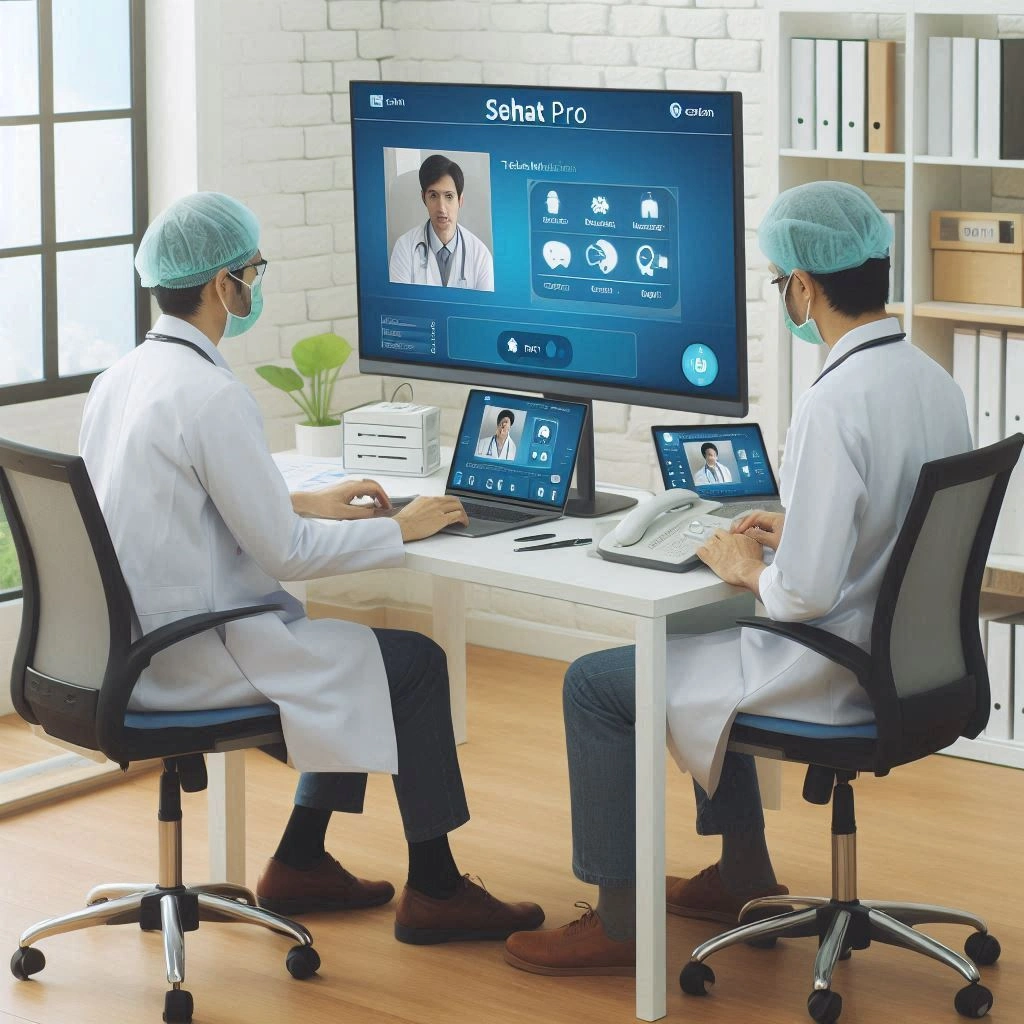How Can Patient History Tracking Software Improve Healthcare Delivery?
In the healthcare sector, delivering high-quality care and improving patient outcomes depend on a variety of factors, with accurate patient data being one of the most crucial. A patient’s medical history offers essential insights into their overall health, past treatments, allergies, and potential risks. For healthcare providers to make informed decisions and offer the best possible care, having an easy and reliable way to track this information is key. This is where patient history software comes into play.
With the rise of digital tools in healthcare, patient history software has become an essential component for improving the accuracy and efficiency of patient care. This software streamlines the process of recording, managing, and accessing a patient’s medical history, ensuring that healthcare providers can quickly access up-to-date and comprehensive patient data. Let’s explore why incorporating patient history software into your practice can improve both the quality of care and patient outcomes.
What Are the Benefits of Using Patient History Software in Healthcare?
There are several benefits to using patient history software, and the advantages extend to both healthcare providers and patients. From improving decision-making to streamlining administrative tasks, here’s how this software can transform healthcare practices:
1. Improved Diagnosis and Treatment Plans
Having access to a patient’s complete medical history is essential for making accurate diagnoses. When a healthcare provider has all the relevant information—such as previous illnesses, medications, surgeries, and allergies—they can tailor their treatment plan more effectively. Patient history software helps eliminate the need for doctors to rely on outdated or incomplete records, which can lead to misdiagnoses or unnecessary treatments.
By having instant access to detailed patient history, healthcare providers can make more informed decisions about the most appropriate course of treatment. Additionally, the software can identify patterns in a patient’s health data, such as recurring issues or risks, enabling early intervention and better preventive care.
2. Time-Saving and Efficiency
Traditional methods of tracking patient history, such as paper records or separate digital systems, can be inefficient and time-consuming. Medical staff often waste valuable time trying to locate records, entering data manually, or dealing with outdated information. This inefficiency can slow down the entire process of care, leading to longer wait times and decreased patient satisfaction.
With patient history software, all the information is centralized and easily accessible. Healthcare professionals can quickly retrieve a patient’s medical history, update records in real-time, and even share data with other members of the care team. This seamless integration not only speeds up administrative tasks but also allows healthcare providers to focus more on patient care, ultimately improving efficiency in the clinic.
3. Enhanced Patient Safety and Risk Management
Patient safety is a top priority in healthcare, and patient history software plays a vital role in reducing risks. With the software’s ability to store comprehensive patient records, healthcare providers can easily check for allergies, drug interactions, and previous adverse reactions to treatments before prescribing medications. This minimizes the chances of medication errors, allergic reactions, or other preventable issues.
For example, if a patient has a history of an allergic reaction to a specific medication, the software can immediately alert the prescribing doctor, ensuring that the patient is given an alternative medication that won’t pose a risk. This built-in safety feature significantly improves patient outcomes by preventing complications and ensuring that patients receive safe and effective care.
4. Improved Communication and Collaboration
Healthcare is a team effort, and patient history software improves communication between various professionals involved in patient care. Whether it’s a primary care physician, specialist, or pharmacist, having access to a patient’s complete medical history enables better coordination of care. Everyone involved can view the same information, which reduces the chances of misunderstandings or conflicting treatments.
In addition, the software can facilitate communication between healthcare providers across different locations. If a patient moves to a new clinic or hospital, their medical history can be easily transferred electronically, ensuring continuity of care. This ensures that patients don’t have to repeat themselves or face unnecessary delays in treatment due to missing information.
5. Regulatory Compliance and Data Security
In today’s healthcare landscape, protecting patient data is more important than ever. Patient history software provides a secure and compliant way to store sensitive patient information. Many software solutions are designed to adhere to industry standards and regulations such as HIPAA (Health Insurance Portability and Accountability Act) in the U.S., ensuring that patient data is encrypted and protected from unauthorized access.
By using patient history software, healthcare practices can reduce the risk of data breaches, maintain compliance with privacy regulations, and safeguard patient confidentiality. The software can also maintain audit trails, logging who accessed the data and when, further ensuring accountability.
6. Patient Engagement and Satisfaction
Patients want to feel involved in their healthcare journey, and having a comprehensive record of their medical history can facilitate better communication between them and their healthcare provider. With patient history software, patients can request access to their records and view updates on their treatment plans. This transparency improves patient satisfaction, as patients feel more informed and empowered in their healthcare decisions.
Additionally, when patients are involved in the management of their health data, they are more likely to adhere to prescribed treatments and follow-up appointments. This collaboration leads to better health outcomes and stronger patient-provider relationships.
7. Cost Efficiency
Although implementing patient history software may have an initial cost, the long-term financial benefits are undeniable. By eliminating paper records and reducing the time spent on manual data entry, healthcare practices can save on administrative costs. The software’s automation features also help minimize errors, which could otherwise lead to costly lawsuits or complications.
Moreover, healthcare practices can reduce costs associated with medical errors, rework, and duplicated tests. With more accurate patient information at their fingertips, doctors can avoid ordering unnecessary tests or treatments, ultimately lowering healthcare expenses for both patients and providers.
How Does SehatPro’s Patient History Software Stand Out in the Market?
SehatPro’s patient history software is designed with healthcare providers in mind, offering a user-friendly and efficient platform to manage patient data. Here’s what makes SehatPro stand out:
1. Seamless Integration with Other Systems
SehatPro’s patient history software is designed to integrate seamlessly with your existing Electronic Health Records (EHR), Practice Management Systems (PMS), and other healthcare tools. This integration eliminates the need for manual data entry and ensures that patient records are automatically updated in real-time. Whether it’s tracking past diagnoses, lab results, medications, or allergies, SehatPro keeps all relevant information in one place.
2. Cloud-Based Accessibility
Being cloud-based, SehatPro’s patient history software offers healthcare providers the ability to access patient records anytime, anywhere. This ensures that physicians, nurses, and administrative staff can access important data even when they are not physically at the clinic. Cloud storage also ensures that records are backed up securely, reducing the risk of data loss due to hardware failure.
3. Real-Time Updates and Alerts
One of the key features of SehatPro’s software is its ability to update patient history in real-time. Whenever a new diagnosis, treatment, or prescription is added, the system automatically updates the patient’s record. The software also sends alerts for important updates, such as upcoming follow-ups or potential medication interactions, helping healthcare providers stay on top of their patients’ needs.
4. Comprehensive Reporting and Analytics
SehatPro provides powerful reporting tools that help healthcare providers analyze patient data and make more informed decisions. The software can generate detailed reports on patient demographics, treatment outcomes, and financial performance, offering valuable insights to improve the clinic’s operations and patient care.
5. User-Friendly Interface
SehatPro’s patient history software is designed to be intuitive and easy to use. Whether you are a healthcare professional or administrative staff, the interface is simple to navigate, reducing the learning curve and increasing productivity. The system is designed with busy clinics in mind, making it easy to quickly input and retrieve data without causing disruptions in daily operations.
What Challenges Should Clinics Consider When Implementing Patient History Software?
While patient history software offers many benefits, there are a few challenges that clinics should keep in mind before adopting the technology:
- Training and Adaptation:
Staff members may need training to familiarize themselves with the new system. It’s essential to ensure that all users are comfortable with the software and understand how to navigate the platform effectively.
- Initial Costs:
Implementing patient history software may require upfront costs for purchasing the software, setting it up, and integrating it with existing systems. However, the long-term savings and improvements in efficiency often outweigh these initial costs۔
- Data Migration:
If your clinic currently uses paper records or a different software system, migrating data to a new platform can be time-consuming. It’s important to have a clear plan in place for transferring patient history information to avoid delays and disruptions.
What Does the Future Hold for Patient History Software?
The future of patient history software is bright, with continuous advancements in AI, machine learning, and data analytics. These technologies will help enhance the capabilities of patient history software, enabling even more personalized care and predictive analytics. As healthcare practices continue to digitize, the adoption of patient history software will only increase, making it an essential tool for improving patient care and clinic efficiency.
FAQs About Patient History Software
1. What is patient history software?
Patient history software is a digital tool that helps healthcare providers store, manage, and track a patient’s medical history, including diagnoses, treatments, medications, and allergies. It allows for easy access to accurate and up-to-date information.
2. How does patient history software improve healthcare outcomes?
By providing healthcare providers with instant access to a patient’s complete medical history, patient history software improves decision-making, reduces errors, enhances patient safety, and allows for better treatment planning, ultimately improving patient outcomes.
3. Can patient history software integrate with other healthcare systems?
Yes, most patient history software, including SehatPro, integrates seamlessly with other systems such as Electronic Health Records (EHR) and Practice Management Systems (PMS), ensuring that patient data is accurately updated and accessible across platforms.
4. Is patient history software secure?
Yes, patient history software is designed to comply with data privacy regulations, such as HIPAA, and utilizes encryption and secure cloud storage to protect patient data from unauthorized access.
5. What are the cost benefits of using patient history software?
Patient history software helps clinics save on administrative costs by eliminating paper records, reducing errors, and improving efficiency. It also helps avoid unnecessary tests and treatments, leading to cost savings over time.


